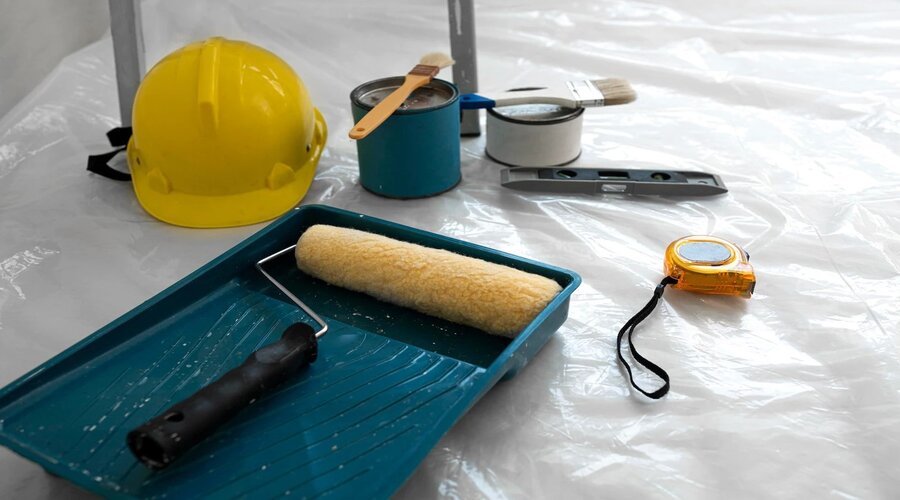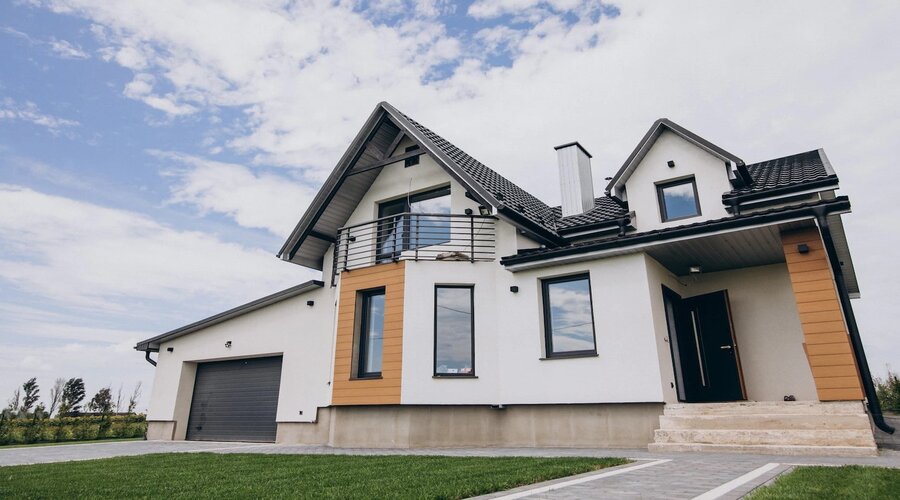Suppose you are looking to spruce up your home’s interior and exterior with a lick of paint. In that case, the average house painting cost in Australia is probably one of your significant considerations.
How much does it cost to paint a house?
Calculating the cost of painting your home before hiring painters in Sydney to do the work will give you a great idea of the overall needs of your specific property. It is more than just a simple case of buying the right amount of paint, as you also need to consider a few hidden costs.
The average cost of interior house painting
When calculating the cost of interior painting in your home, you need to complete a few simple tasks to ensure you are set up correctly. Firstly you have to decide if your interior walls need treating in any way, or if you need to remove any wallpaper or any other specific painting surface or repair any damage.
It pays to do the math!

Calculating paint is often overlooked, as people simply solve the issue by buying tons of extra. But this is often quite costly, especially considering the amount of paint you may have to purchase. A simple calculation can be done based on the type of paint you are using and how many layers of colour coat you will be applying.
The general rule for calculating the amount of paint to be used for a particular room is by using a specific math equation. Simply add together the length of all of the walls and then multiply that number by the height of the ceiling. This should give you a rough estimate of how much paint you will need to fully cover that room.
You then have to take into account the space of this square foot calculation and all of the windows and doors that you do not wish to paint. You must remove the square meterage of the windows and doors and other surfaces that you do not wish to paint.
Inspect your paintwork beforehand
A quick inspection might be all it takes to ensure that your walls are in good condition and then they can be properly prepped for painting. Usually, the preparation process depends on the condition of your walls, and therefore it might be worth asking a professional to perform an inspection beforehand.
The preparation needed to paint your interiors often includes sanding the surface to ensure that the wall surfaces are flat and ready to apply paint. After this process is done, and it may take some time, you should be ready.
You may want to decide to paint the architraves of your home if they are made of plain material, but in some cases, fine wood can be used and carefully using a paint removal system can add a certain flair or look to a room, so it is worth taking into account.
Double-check the exterior surface conditions

The same preparation work should be put into painting the exteriors of your home, with a little more careful inspection. You will want to check if any weather damage has been done to your exterior surfaces, and each surface type, such as metal, wood and brick to be checked thoroughly for rot, paint flaking or other surface damage.
This exterior preparation work will often take the longest time if any issues have been found. Still, it is worth taking care of and not simply painting over the damaged surface, as the paint might not dry well or start showing signs of issues after just a day or two. If you are ever in doubt about the condition of your exterior painted surfaces, call in a professional who can point you in the right direction.
Usually, the average wall surface that is fresh and hasn’t been painted on before will require two coats of primer paint, two coats of putty and two coats of fresh paint to give it a finished look. A surface that has been painted before will need as much preparation and may only require 1 coat of primer and 2 coats of paint to complete the finished look.
Remember to subtract windows and doors from the equation!
Simply make the same length multiplied by the height calculation for each window and door, add them together and subtract them from the overall square metre measurement of the room. This is your paintable surface area calculation.
Depending on the type of paint you are using, there is a general rule about the quantity of paint you will need to cover this square metre calculation. Usually, 1 litre of paint will cover roughly 1 square metre. Simply calculate how many litres you need to use for the square metre measurement of your room.
The amount of paint you will use up is also determined by the type of surface of the wall. Untreated drywall will absorb more of the paint that an already-painted surface, as well as plaster or brickwork. Calculate a small quantity of overuse and spillage.
The average cost of exterior house painting

The same calculations can be done when trying to figure out the amount of paint you will need to cover the exterior surfaces of your home. You may need more coats of paint, such as primer and finish paint, but the calculations are roughly the same if you take into account paintable surfaces.
Do not measure the height of your house, only calculate paintable surfaces and deduct the square metre area of your windows, roofs and other un-paintable surfaces.
Read More: How to Paint Your Home – A Homeowner’s Guide

If in doubt, call a pro!
If you ever feel out of your depth when painting your house or even calculating how much paint you will need to finish the job well, enlist the services of a professional painting company, Priority One Coatings to help you out. As an experienced house painter Sydney, we have all of the right tools necessary to get the job done on time and on budget.
